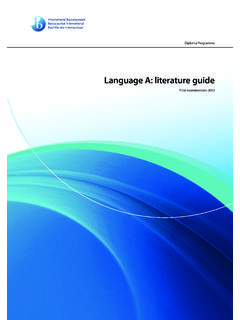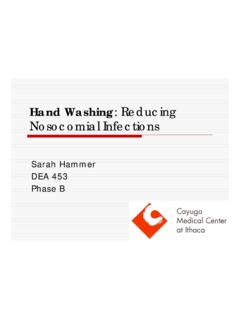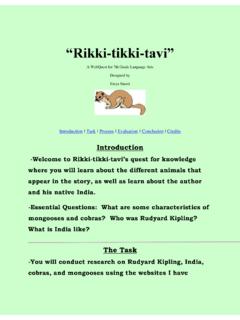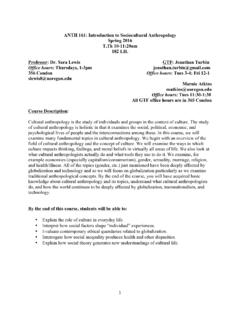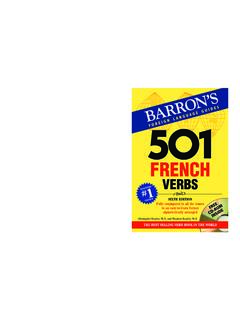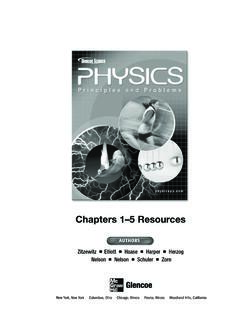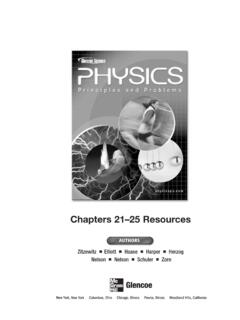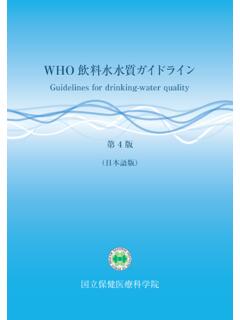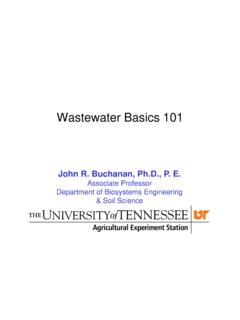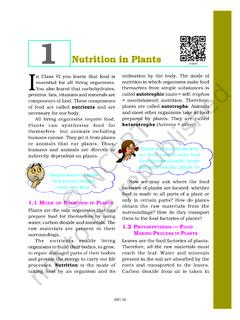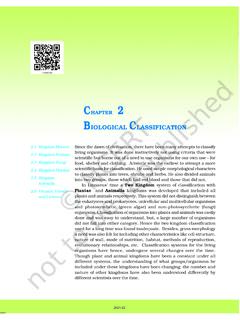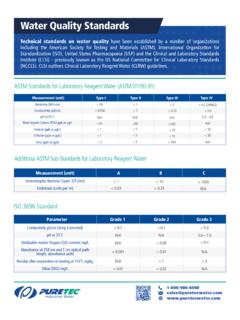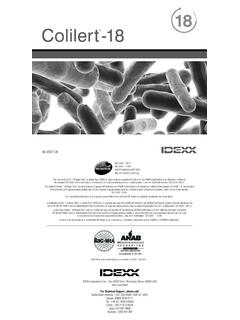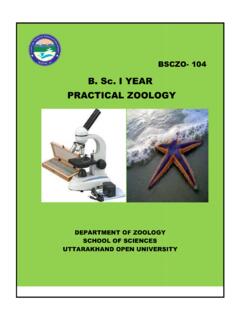Transcription of Multiple Choice Review Classification
1 PSI Biology Classification Multiple Choice Review Classification 1. Which of the following accurately lists the levels of Classification in our current taxonomic system? a. Phylum, kingdom, domain, class, order, family, genus, species b. Class, domain, kingdom, phylum, order, family, genus, species c. Domain, phylum, kingdom, class, order, family, genus, species d. Domain, kingdom, phylum, class, order, family, genus, species 2. Which of the following is the most limiting level of Classification of an organism?
2 A. Class b. Genus c. Order d. Species 3. Which of the following is the least limiting level of Classification ? a. Class b. Genus c. Order d. Species 4. Which grouping of organisms is considered to have the greatest amount of diversity? a. Kingdom b. Species c. Domain d. Order 5. What does LUCA represent in Classification ? a. The largest universal common ancestor b. The last universal common ancestor c. The last unknown convergent ancestor d. The largest unknown convergent ancestor 6. Which of the following shows the correct scientific name for a fruit fly?
3 A. Drosophila melanogaster b. Drosophila Melanogaster c. Drosophila Melanogaster d. Drosophila melanogaster 7. What can we infer about bacteria based upon the illustration? a. There is only one kingdom within the domain of bacteria b. There are three kingdoms with the domain bacteria c. There is one domain within the kingdom bacteria d. There are three domains within the kingdom bacteria PSI Biology Classification A table of characteristics of the three domains of life is shown below. Use this information to complete the next three questions.
4 Characteristic Domain A Domain B Domain C Single celled Some Yes Yes Cell wall Yes Yes Nuclear envelope No No Ribosomes Yes ? Yes Membrane bound organelles No No Membrane lipids Unbranched phospholipids Branched, more than one type Unbranched phospholipids 8. Based upon the information included in the chart above, Domain A represents which of the following domains? a. Plantae b. Eukarya c. Bacteria d. Archaea 9. Which of the following best completes the table, in the cell marked ? ? a. Yes b.
5 No c. Some d. Unknown 10. Based upon the information included in the chart above, Domain C represents which of the following domains? a. Plantae b. Eukarya c. Bacteria d. Archaea 11. Which of the Domains is most closely related to the LUCA? a. Plantae b. Eukarya c. Bacteria d. Archaea PSI Biology Classification Below is an illustration showing domains and kingdoms. Respond to the next three questions based upon this illustration. 12. What do the letters D & C represent in the diagram? a. Animals and Plants b.
6 Eukaryotes and Prokaryotes c. Mammals and Reptiles d. Phyla and Classes 13. Which of the following letters represents bacteria within the illustration above? a. A b. B c. C d. D 14. Which of the following letters represents kingdoms within the illustration above? a. A and B b. B and C c. C and D d. D and A Below is a chart listing some of the traits of each kingdom within the eukaryotic domain. Use this chart to respond to the next three questions: PSI Biology Classification 15. One type of organism is multicellular and performs photosynthesis.
7 Into which kingdom does this organism most likely belong? a. Protists b. Fungi c. Plantae d. Animalia 16. One type of organism has some photosynthetic members but is primarily unicellular. They do have a true nucleus and organelles. Into which kingdom does this organism most likely belong? a. Protists b. Fungi c. Plantae d. Animalia 17. These organisms are eukaryotic, nearly all are multicellular; they are non-photosynthetic. To which kingdom do they best fit? a. Protists b. Fungi c. Plantae d. Animalia Three cladograms are shown in the images below.
8 Respond to the next two questions based upon these illustrations. 18. Which of the letters, shown in the illustrations above, represent the same position in the cladogram as 1 ? a. 7 and 8 b. 4 and 8 c. 4 and 7 d. 6 and 8 PSI Biology Classification 19. Which of the following organisms are most closely related, based upon these cladograms? a. 1 and 2 b. 4 and 5 c. 7 and 8 d. 5 and 6 20. What is the primary purpose of a phylogenetic tree? a. The primary purpose of a phylogenetic tree is to be able to develop species and genus names of new discovered organisms.
9 B. The primary purpose of a phylogenetic tree is to be able to trace evolutionary relationships amongst organisms. c. The primary purpose of a phylogenetic tree is to be able to determine which organisms are more advanced than others. d. The primary purpose of a phylogenetic tree is to be able to determine into which kingdom a living organism belongs. 21. Which of the following is NOT used to determine the phyla to which a plant belongs? a. Absence of a vascular system b. Presence of seeds c. Presence of chloroplasts d.
10 Absence of flowers 22. Which of the following statements regarding plants is correct? a. Conifers, such as cedar trees, do not possess a xylem. b. Phloem is used to transport water absorbed through the leaves down to the roots of the plant. c. Flowering plants are separated into two phyla, the angiosperms and gymnosperms. d. The first plants were most likely aquatic. 23. Which of the following lists characteristics of a dicot? a. Two cotyledons, branched leaf veins, complex arrangements of vascular tissue.

